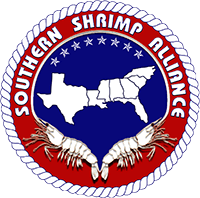In December of 2006, the U.S. Government Accountability Office (GAO) issued a report following a review of the U.S. Department of Agriculture’s (USDA) administration of the Trade Adjustment Assistance for Farmers (TAAF) program. The GAO’s 2006 report found significant flaws in the TAAF program existing at the time, concluding that “the criteria for [TAAF] program eligibility were difficult for many producers to meet and that USDA spending for the program was well below the amount provided for by the Trade Act [of 2002].”
In July, the GAO released another report reviewing USDA’s administration of TAAF, this time showing that these problems had been largely resolved. The July 2012 report found that, as of April 2012, the USDA had approved 90% (9,852 of 11,000) of TAAF applications received. The GAO’s recent report additionally found that the USDA spent (obligated) 63% of the amount provided for by the Trade and Globalization Adjustment Assistance Act of 2009 ($127.2 million of $202.5 million).
Some other key facts and figures from the report, current as of April 2012:
- USDA has spent nearly $100 million on the TAAF program: $46 million in administrative costs related to technical assistance and $50 million in financial benefits to TAAF participants.
- USDA certified only 5 of the 18 commodities for which it received petitions as eligible for TAAF. The only commodity certified in both fiscal years 2010 and 2011 was the shrimp industry.
- Per the GAO, if not for changes to the certification criteria effectuated by the Trade and Globalization Adjustment Assistance Act of 2009, the petitions submitted by both the shrimp and the asparagus industry would not have qualified for TAAF assistance.
- According to an estimate by an official from the USDA’s Foreign Agricultural Service, 80% of the approved TAAF applicants met individual eligibility requirements “through a process whereby industry officials could submit data for all producers in a state or certain counties within a state.” (For the shrimp industry, these prices were compiled and submitted by the Southern Shrimp Alliance).
- 4,452 of the 7,781 TAAF participants (57%) that completed initial business plans were from the shrimp industry.
- 3,445 of the 5,073 TAAF participants (68%) that completed long-term business plans were from the shrimp industry.
- Shrimp industry participants were significantly more likely (77%) to complete long-term business plans after completing initial business plans than participants from the catfish (68%), lobster (47%), asparagus (34%), or wild blueberries (31%) industries.
- Of the $49.7 million in financial benefits distributed through TAAF, $37.4 million (75%) went to members of the shrimp industry.
On behalf of the entire shrimp industry, the Southern Shrimp Alliance is grateful for the committed work of everyone who helped to make valuable technical and financial assistance through TAAF available to the industry, particularly officials with the USDA and NOAA Sea Grant. Moreover, the shrimp industry’s participation in the TAAF program would not have been possible if not for the efforts of Professors Michael G. Haby and Lawrence L. Falconer of Texas A & M University, authors of the petitions submitted on behalf of the warmwater shrimp industry by the Southern Shrimp Alliance.
Read the GAO’s July 2012 report here: http://www.gao.gov/products/GAO-12-731
Review the GAO’s December 2006 report here: http://www.gao.gov/products/GAO-07-201
